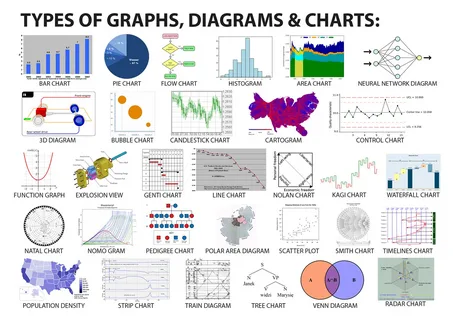As tensions rise around the globe, many people are beginning to wonder about the potential for another world war. The question of what countries will be in World War 3 has become a topic of intense speculation. This blog post will explore the current geopolitical landscape, identify key players, and discuss factors that could trigger a global conflict. Understanding these dynamics can provide insights into what might happen in the future.
Understanding the Geopolitical Landscape
The world today is interconnected in ways that were unimaginable just a few decades ago. While globalization has fostered economic cooperation, it has also intensified competition over resources, ideology, and influence. Countries are increasingly aligning themselves into blocs, often in opposition to one another. This growing divide makes it crucial to examine the geopolitical landscape and its potential implications for global peace.
Countries like the United States, China, and Russia are at the forefront of international relations. Their actions significantly impact global stability. The United States, for example, has historically positioned itself as a defender of democratic values. However, its military interventions and foreign policies have often led to tensions, particularly in regions like the Middle East and Eastern Europe.
China, on the other hand, is rapidly expanding its influence. Its assertive claims in the South China Sea and strategic investments in Africa and Europe are causing alarm among neighboring nations. Russia’s aggressive posture, especially in Ukraine and its historical ties to countries in Eastern Europe, further complicates this landscape. These dynamics suggest that any conflict could easily escalate into a global war.
Key Players in Potential Global Conflict
When discussing potential participants in World War 3, several nations come to mind. The United States, China, and Russia are often considered the main players due to their military capabilities and global influence. However, other countries could also play critical roles.
NATO allies, including the United Kingdom, Germany, and France, would likely support the United States in a conflict. On the other hand, nations like North Korea and Iran could align with adversarial powers. These alliances make it essential to consider not just individual nations, but also the broader network of relationships that could shape a future conflict.
The Role of NATO and Other Alliances
NATO has been a significant force in maintaining peace since its establishment in 1949. However, the changing security environment raises questions about its future role. If a conflict were to erupt, NATO would likely activate Article 5, which states that an attack on one member is an attack on all. This could draw in multiple countries and escalate the conflict rapidly.
Additionally, other military alliances, such as the Shanghai Cooperation Organization (SCO), which includes China and Russia, could counterbalance NATO. Understanding these alliances is crucial in predicting how a potential conflict might unfold. As countries form new partnerships based on shared interests, the likelihood of widespread involvement in any future war increases.
Factors That Could Trigger World War 3
Several factors could serve as triggers for World War 3. Territorial disputes are one of the most significant. For example, the ongoing tensions in the South China Sea involve competing claims between China and several Southeast Asian nations. Similarly, Russia’s annexation of Crimea in 2014 raised concerns about further aggression in Eastern Europe.
Resource scarcity also poses a risk. As populations grow, the demand for food, water, and energy will continue to rise. Countries may find themselves at odds over access to these essential resources, leading to potential conflicts.
Ideological differences can further exacerbate tensions. Nations with opposing political systems often find it challenging to cooperate. The divide between democratic and authoritarian regimes can create friction, making conflict more likely.
Regional Conflicts and Their Impact on Global Peace
Ongoing regional conflicts have the potential to escalate into larger confrontations. The civil war in Syria has drawn in multiple countries, with the U.S., Russia, and Iran all playing significant roles. Each nation has its own interests, which complicates efforts for peace.
In addition, tensions between India and Pakistan, two nuclear-armed neighbors, continue to simmer. Any military confrontation could have catastrophic consequences, drawing in other nations and escalating the conflict further.
These regional flashpoints highlight the fragility of global peace. They serve as reminders that local disputes can have far-reaching implications, affecting international relations and potentially leading to a larger conflict.
Expert Predictions on Future Wars
Experts have varying opinions on the likelihood of World War 3. Some argue that the interconnectedness of the global economy acts as a deterrent against war. They believe that the potential costs of conflict outweigh any perceived benefits.
Others, however, caution that the world is more volatile than ever. With rising nationalism and increasing military capabilities, the risk of conflict is higher. Analysts warn that any miscalculation or unexpected event could lead to a rapid escalation of tensions.
Understanding these predictions is essential for grasping the potential future landscape. While it is impossible to predict with certainty, being aware of expert opinions can help inform public discourse on global security.
Historical Context: Lessons from Previous Wars
Looking back at history provides valuable insights into the potential for future wars. The lessons learned from World War 1 and World War 2 emphasize the importance of diplomacy and cooperation. Both conflicts were sparked by a complex web of alliances and misunderstandings. The consequences were devastating and reshaped the world.
Learning from these historical events can help prevent future conflicts. It underscores the necessity for nations to engage in dialogue and seek peaceful solutions. The international community must remain vigilant and proactive in addressing emerging threats.
The Impact of Technology on Warfare
In today’s world, technology plays a crucial role in shaping military strategies and capabilities. The advancements in weapons systems, cyber warfare, and artificial intelligence (AI) are transforming the nature of conflict. As nations invest heavily in these technologies, the potential for conflict increases.
For instance, the development of advanced missile systems allows countries to strike targets with greater precision and speed. This capability raises the stakes in any potential conflict, as nations must continuously adapt to the evolving military landscape. Additionally, the rise of unmanned aerial vehicles (drones) has changed how wars are fought. Drones enable surveillance and targeted strikes without putting soldiers in harm’s way, which could lower the threshold for initiating military action.
Cyber warfare is another critical factor. Countries can now engage in conflicts without traditional military confrontation. Cyberattacks on critical infrastructure, financial systems, or government networks can cause significant disruption and fear. Nations like Russia and China have demonstrated their cyber capabilities, raising concerns about the potential for cyber conflicts escalating into physical warfare. As countries invest in these technologies, the risk of miscalculation or unintended escalation grows, making it essential to understand their implications for global peace.
The Role of Public Perception and Media
Public perception and media coverage significantly influence how nations respond to international crises. In the age of social media, information spreads rapidly, shaping opinions and fueling tensions. Governments must navigate this landscape carefully, as public sentiment can drive political decisions.
For instance, when military actions are taken, the media’s portrayal can impact public support. If the media highlights humanitarian concerns, citizens may pressure their governments to act or refrain from military action. Conversely, if national security is emphasized, public support for intervention may grow. This dynamic can lead to a feedback loop where media coverage influences government decisions, which in turn affects public perception.
Furthermore, misinformation and propaganda can exacerbate tensions. Countries may use disinformation campaigns to sway public opinion or discredit rivals, further complicating diplomatic efforts. In a potential World War 3 scenario, controlling the narrative becomes essential, as nations seek to justify their actions and rally support.
Understanding the role of public perception and media is crucial in assessing the likelihood of global conflict. As nations navigate the complexities of international relations, the influence of information cannot be underestimated. It highlights the need for transparency and accurate reporting to promote informed discussions around global security.
Conclusion: The Future of Global Stability
The question of which countries will be involved in World War 3 is complex and fraught with uncertainty. As tensions rise and geopolitical dynamics shift, it is crucial to remain informed about the key players and potential triggers for conflict. While some experts believe that globalization acts as a buffer against war, others caution that the world remains fragile.
Ultimately, the future of global stability depends on the actions of nations and their ability to navigate the challenges ahead. By fostering cooperation and understanding, the international community can work towards a more peaceful future.
FAQs about World War 3 Predictions
- What are the main countries likely to be involved in World War 3?
Major players may include the United States, China, Russia, and their respective allies. - What factors could trigger World War 3?
Territorial disputes, resource scarcity, and ideological differences are significant triggers. - How does NATO influence global conflict?
NATO acts as a military alliance, which could escalate a conflict if one member is attacked. - Are regional conflicts a risk for global war?
Yes, ongoing regional conflicts can escalate and draw in other nations. - What lessons can we learn from past wars?
Diplomacy and cooperation are vital to preventing conflicts and maintaining peace.










